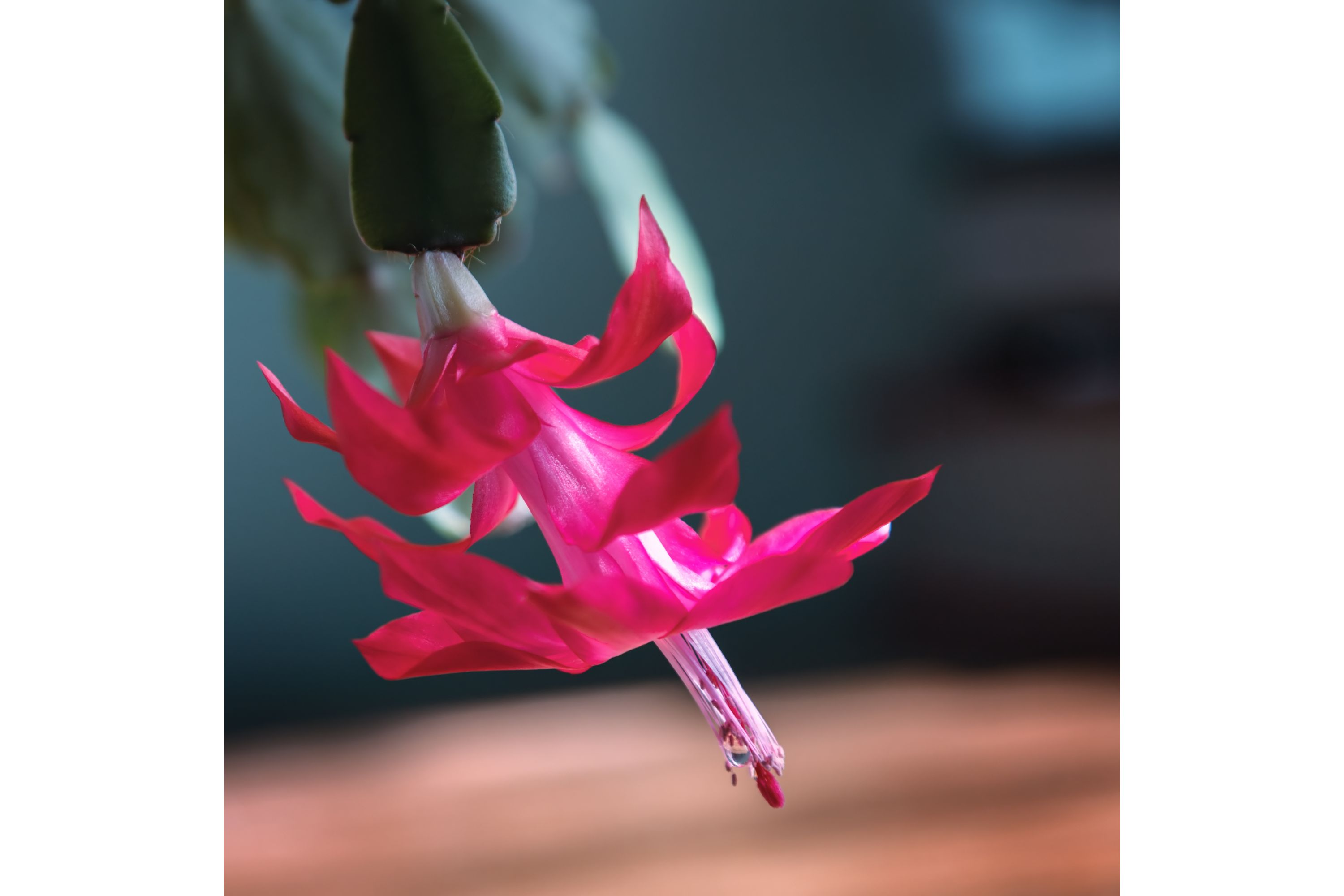False Christmas cactus
(Schlumbergera truncata)

Description
Schlumbergera truncata, commonly known as the Thanksgiving cactus, is a popular houseplant that belongs to the family Cactaceae. Native to the coastal mountains of southeastern Brazil, it is a tropical epiphyte that grows on trees and rocks in the wild. It is known for its colorful flowers that bloom in late fall, just in time for the Thanksgiving holiday in the United States, which is how it gets its common name. In this article, we'll take a closer look at the Schlumbergera truncata, its history, growing conditions, care requirements, propagation, and common problems. History The genus Schlumbergera was named in honor of Frédéric Schlumberger, a French collector of cacti, who discovered the plant in the mountains of Brazil in the early 1800s. The species truncata was described in 1858 by French botanist Charles Lemaire. The plant was first introduced to Europe in the late 1800s, and it has been a popular houseplant ever since. Growing Conditions The Thanksgiving cactus is a tropical plant that requires specific growing conditions to thrive. It prefers bright, indirect light, and is sensitive to direct sunlight, which can burn its leaves. In its native habitat, it grows in shaded areas, under the canopy of trees. As an epiphyte, it requires good drainage and likes to be kept in a well-draining potting mix. It also prefers a slightly acidic soil with a pH range of 5.5 to 6.0. The plant can tolerate a wide range of temperatures, but it prefers temperatures between 60°F to 70°F (15°C to 21°C) during the day and 55°F to 60°F (13°C to 15°C) at night. Care Requirements Watering: Schlumbergera truncata is a succulent and can store water in its leaves. However, it is sensitive to overwatering and can easily develop root rot if the soil stays too wet for too long. It is best to water the plant thoroughly, then allow the soil to dry out before watering again. During the growing season, water the plant once a week or when the top inch of soil feels dry to the touch. In the winter, reduce watering to once every two to three weeks. Humidity: The Thanksgiving cactus prefers high humidity levels, between 50% to 60%. You can increase humidity by placing a tray of water near the plant or by using a humidifier. Fertilizer: During the growing season, fertilize the plant once a month with a balanced fertilizer. You can also use a cactus or succulent fertilizer, which has a higher concentration of phosphorus and potassium. Pruning: Prune the plant after it has finished blooming, by removing any dead or damaged branches. You can also pinch back the stems to promote bushier growth. Propagation Schlumbergera truncata can be propagated by stem cuttings. Here's how to do it: Select a healthy plant: Choose a healthy Schlumbergera truncata that is at least three years old and has produced several stems. Take a cutting: Using a clean, sharp knife or scissors, take a 3 to 4-inch cutting from one of the stems. Make sure the cutting has at least two segments. Let the cutting dry: Allow the cutting to dry for a few days until the cut end has callused over. Prepare the potting mix: Use a well-draining potting mix made for cacti and succulents. You can also add perlite or sand to improve drainage. Plant the cutting: Plant the cutting in the potting mix, making sure to bury at least one segment in the soil. Water the soil sparingly, enough to moisten the soil. Provide the right conditions: Place the pot in a bright, but indirect light location, and maintain a temperature between 60°F to 70°F (15°C to 21°C) during the day and 55°F to 60°F (13°C to 15°C) at night. Keep the soil slightly moist, but not wet. Wait for roots to grow: After a few weeks, roots will begin to grow from the buried segment. Once the plant has established roots, you can treat it like a mature Schlumbergera truncata. Propagating Schlumbergera truncata is relatively easy, and with a little patience, you can have a new plant to enjoy or share with friends and family. Common problems Schlumbergera truncata, like any other plant, can face a few problems during its growth cycle. Here are some of the common problems that can affect a Thanksgiving cactus: Overwatering: Overwatering is one of the most common problems that affect Schlumbergera truncata. The plant can suffer from root rot if it is exposed to too much water, leading to wilting and eventual death. Underwatering: On the other hand, underwatering can also affect the Thanksgiving cactus. The plant can wilt, drop leaves, and the soil can become too dry, leading to a lack of nutrients for the plant. Pests: Pests like spider mites and mealybugs can attack the plant, causing discoloration, distortion, and wilting of the leaves. They can also stunt growth and affect the plant's overall health. Temperature: Schlumbergera truncata prefers temperatures between 60°F to 70°F (15°C to 21°C) during the day and 55°F to 60°F (13°C to 15°C) at night. Any temperature outside this range can affect the plant's growth and development. Light: The Thanksgiving cactus prefers bright, indirect light and is sensitive to direct sunlight, which can cause sunburn on its leaves. Insufficient light can cause the plant to grow slowly, while too much light can lead to yellowing of the leaves. Nutrient deficiency: If the plant is not given proper nutrients, it can suffer from nutrient deficiency. This can manifest in various ways, such as stunted growth, yellowing of the leaves, and wilting. To avoid these common problems, make sure to provide the plant with the correct growing conditions, including the right amount of water, light, temperature, and nutrients. Regularly inspect the plant for any signs of pests or disease, and take action immediately to prevent further damage. With proper care, your Schlumbergera truncata can bloom beautifully for many years to come.
Taxonomic tree:







